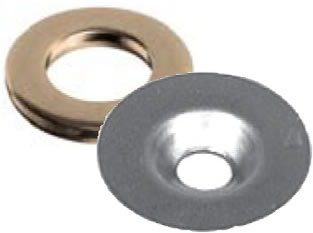
Cupped washers have become a popular alternative to traditional flat washers. Like all washers, they are used to distribute the load of a fastener. You can secure two or more objects together by driving a threaded fastener, such as a bolt, through a washer and the objects, followed by securing the end with a nut.
With a washer in place, the threaded fastener’s load will be distributed over a larger area, thus protecting the objects from damage. Considering that flat washers will distribute the fastener’s load as well, you might be wondering when you should use a cupped washer.
Overview of Cupped Washers
Cupped washers are characterized by their cup-like shape. They aren’t completely flat. Instead, cupped washers have a concave surface that faces the fastener with which they are used.
Vibrations
For fastening applications in which the joined objects will be exposed to vibrations, you may want to use cupped washers. Cupped washers offer greater protection against vibration-related loosening than flat washers. The concave surface will essentially lock them in place. Even when exposed to frequent vibrations, cupped washers will continue to hold the objects together thanks to their concave design.
Delicate Parts
You may want to use cupped washers when securing delicate parts together. Delicate parts, such as gaskets or other mechanical seals, may break under the load of a threaded fastener. Driving a fastener through a delicate part will expose it to stress. A cupped washer, however, will distribute the fastener’s load across a greater surface area. The load won’t be concentrated. Instead, it will be spread across a greater surface area.
Aesthetics
Some businesses use cupped washers for aesthetic purposes. Cupped washers offer a cleaner and more modern style than flat washers. Their concave design adds a unique decorative element to them.
Protects Against Overtightening
Another reason to use cupped washers is to protect against overtightening. Overtightening occurs when you tighten a fastener so much that it damages the objects with which it’s used. As you tighten the fastener, it will press against the surface of the adjacent object. This pressure may cause the object to crack. Cupped washers protect against damage such as this minimizing the risk of overtightening. As you tighten the fastener, you’ll feel the cupped washer flatten out.
In Conclusion
Cupped washers feature a unique cup-like shape that distinguishes them from flat washers. You should consider using them for fastening applications involving vibrations, delicate parts, for aesthetic reasons and to protect against overtightening.



